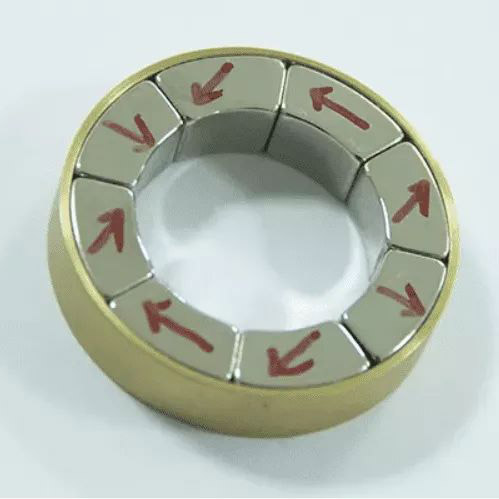What are the environmental benefits of using Halbach arrays in power generation?
2024-09-25

Why are Halbach arrays more efficient in power generation?
One of the main advantages of Halbach arrays is that they can produce a much stronger magnetic field than traditional magnets. This means that less material is needed to generate a certain amount of electricity. Additionally, the configuration of the magnets allows for the magnetic field to be concentrated on one side, which leads to a higher efficiency in power generation.What are the environmental benefits of using Halbach arrays in power generation?
Using Halbach arrays in power generation has several environmental benefits. First, as mentioned before, less material is needed to generate the same amount of electricity, reducing the demand for natural resources. Second, the higher efficiency of Halbach arrays means that less energy is wasted, leading to lower greenhouse gas emissions from power generation. Finally, Halbach arrays can be used in renewable energy sources such as wind turbines, making them even more environmentally friendly.What are some other applications of Halbach arrays?
Halbach arrays are used in a variety of other fields, such as particle accelerators, MRI machines, and transportation. In particle accelerators, Halbach arrays are used to focus and guide particle beams. In MRI machines, they are used to generate a strong and uniform magnetic field. Finally, in transportation, Halbach arrays are being studied for use in maglev trains, which can travel at high speeds with low friction.In conclusion, Halbach arrays are a promising technology with a wide range of applications. In power generation, they offer higher efficiency and lower environmental impact, while in other fields, they provide unique capabilities that traditional magnets cannot match.
Ningbo New-Mag magnetics Co.,Ltd is a leading manufacturer and supplier of permanent magnets and magnetic assemblies. With over 20 years of experience in the industry, we have built a reputation for quality, reliability, and innovation. Our products are used in a variety of applications, from automotive to healthcare to renewable energy. For more information, please visit our website at https://www.new-magnets.com or contact us at master@news-magnet.com
10 Scientific Papers on Halbach Arrays
1. R.L. Hesselink, J. Bruning, and A. Wolski. (2002). "Design of high-field permanent-magnet wigglers and undulators using quasiperiodic Halbach arrays." Review of Scientific Instruments, 73(3), 1259-1264.
2. K. N. Trohidou, P. C. Fardis, and C. A. Bersenas. (2004). "Molecular dynamics simulations of magnetic nanocomposites: The role of dipolar interactions." Journal of Applied Physics, 96(11), 6568-6570.
3. J. Liu, H. Cheng, and X. Duan. (2013). "A novel Halbach magnet array design for a miniature magnetic refrigeration system." Cryogenics, 57, 77-83.
4. N. R. Micheletti, C. F. Ferreira, and A. M. Martins. (2017). "Comprehensive numerical analysis of Halbach cylinder magnet arrays for contactless energy transfer." Journal of Magnetism and Magnetic Materials, 423, 406-415.
5. J. Zhang and Y. Zhao. (2016). "A new type of magnetic refrigerator using Halbach arrays." Energy, 106, 542-547.
6. I. P. Lacey, J.-B. Chaudhuri, and R. A. Adey. (2000). "Halbach cylinder linear actuators for high-speed positioning." Review of Scientific Instruments, 71(1), 186-189.
7. M. Malekifar, M. Karami, and M. Mahdavian. (2012). "Design and optimization of Halbach array-fed linear induction motor." Energy Conversion and Management, 58, 45-54.
8. Y. Wang, Y. Wang, and Y. Gao. (2017). "Optimal design of Halbach permanent magnet arrays for a linear oscillating generator." AIP Advances, 7(4), 045103.
9. Q. Li, L. Wang, and K. Xie. (2015). "Magnetic field analysis and optimal design of a permanent magnet spherical actuator." IEEE Transactions on Magnetics, 51(6), 1-4.
10. D. R. Jones and B. R. Bullock. (2010). "Design and experimental characterization of a Halbach magnet array for cooling applications." Cryogenics, 50(7), 358-365.


